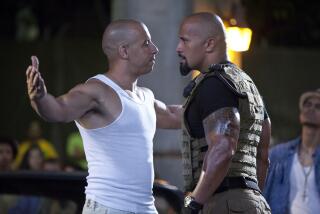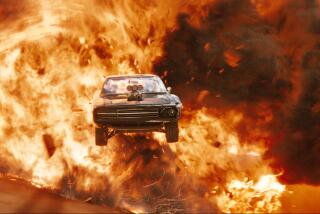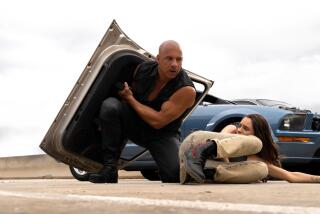Vin Diesel says Paul Walker’s Brian O’Conner could return in ‘Fast & Furious 11’

- Share via
- Vin Diesel appeared at Fuel Fest in Pomona this weekend, discussing the next installment of the “Fast & Furious” franchise.
- How will producers reunite Diesel’s Dominic Toretto and the late Paul Walker’s Brian O’Conner?
Vin Diesel says the planned finale of the long-running “Fast & Furious” franchise will come with an unexpected passenger.
Speaking at Fuel Fest, an automotive event in Pomona over the weekend, Diesel told fans that the final “Fast & Furious” film will bring back one of the series’ most beloved characters: Paul Walker’s Brian O’Conner. The longtime on-screen partner to Diesel’s Dominic Toretto, O’Conner last appeared in 2015’s “Furious 7,” which was completed after Walker’s death in a car accident in 2013 at age 40.
The franchise — known for its blend of street racing, elaborate heists and outsized action — has grown into one of the most successful of all time, with more than $7 billion at the global box office.
“Just yesterday I was with Universal Studios,” Diesel said in a video from the event. “The studio said to me, ‘Vin, can we please have the finale of ‘Fast & Furious’ [in] April 2027?’ I said, ‘Under three conditions’ — because I’ve been listening to my fanbase.”
‘F1’ is Apple’s big-budget racing drama starring Brad Pitt. The iPhone maker was hoping for its first genuine box office hit.
Those conditions, he said, were to bring the franchise back to L.A., return to its street-racing roots and reunite Dom and Brian.
“That is what you’re going to get in the finale,” Diesel promised.
How the production might accomplish that reunion remains unclear. When Walker died during the making of “Furious 7,” the filmmakers turned to a mix of archived footage, digital effects and performances by Walker’s brothers, Caleb and Cody, who served as stand-ins for unfinished scenes. Artists at Weta Digital created more than 300 visual-effects shots to map Walker’s likeness onto his brothers’ bodies, often piecing together dialogue from existing recordings. The film’s farewell — showing Brian and Dom driving side by side before splitting onto separate roads — became one of the franchise’s most memorable and emotional moments, widely seen as a tribute to Walker’s legacy.
A return for Brian O’Conner would join a growing list of posthumous digital performances in major franchises — a practice that continues to stir debate over where the line should be drawn. In 2016’s “Rogue One: A Star Wars Story,” Peter Cushing’s Grand Moff Tarkin was recreated through a mix of motion capture, CGI and archival material, decades after Cushing’s death. In 2019, “The Rise of Skywalker” relied on previously unused footage and digital stitching to return Carrie Fisher’s Leia to the screen three years after the actress’ passing.
And in last year’s “Alien: Romulus,” the late Ian Holm’s likeness was recreated as an android using AI and digital effects, with the approval of his estate — a choice that sparked controversy and led to more practical effects being used in the film’s home release.
More to Read
Only good movies
Get the Indie Focus newsletter, Mark Olsen's weekly guide to the world of cinema.
You may occasionally receive promotional content from the Los Angeles Times.












